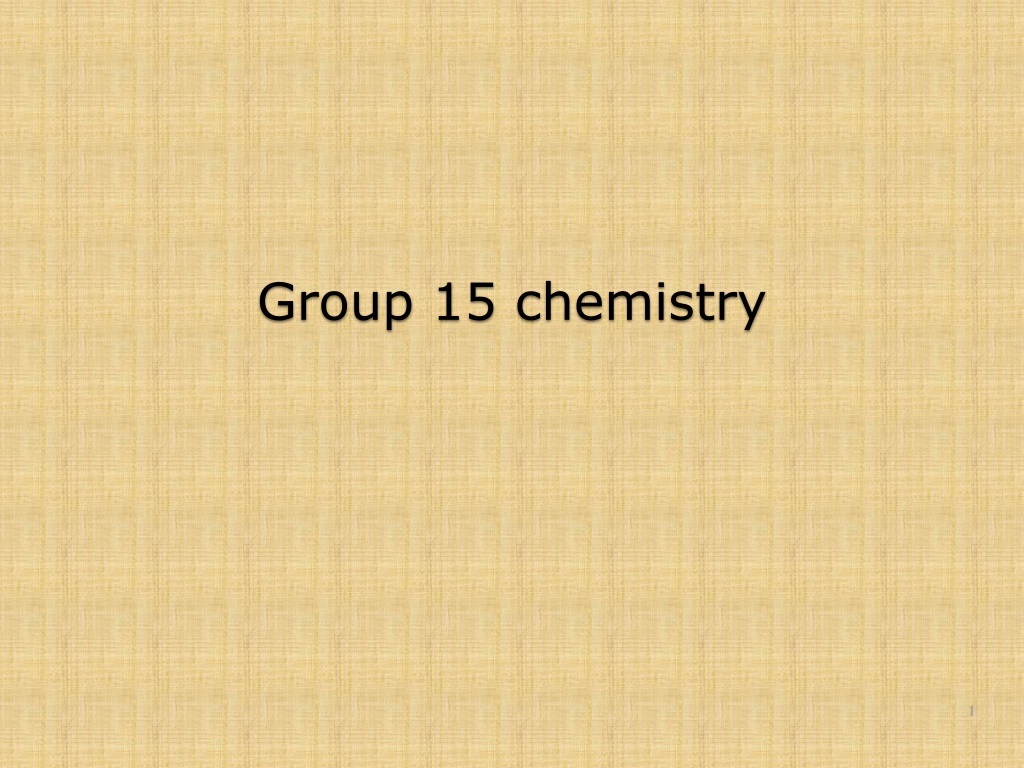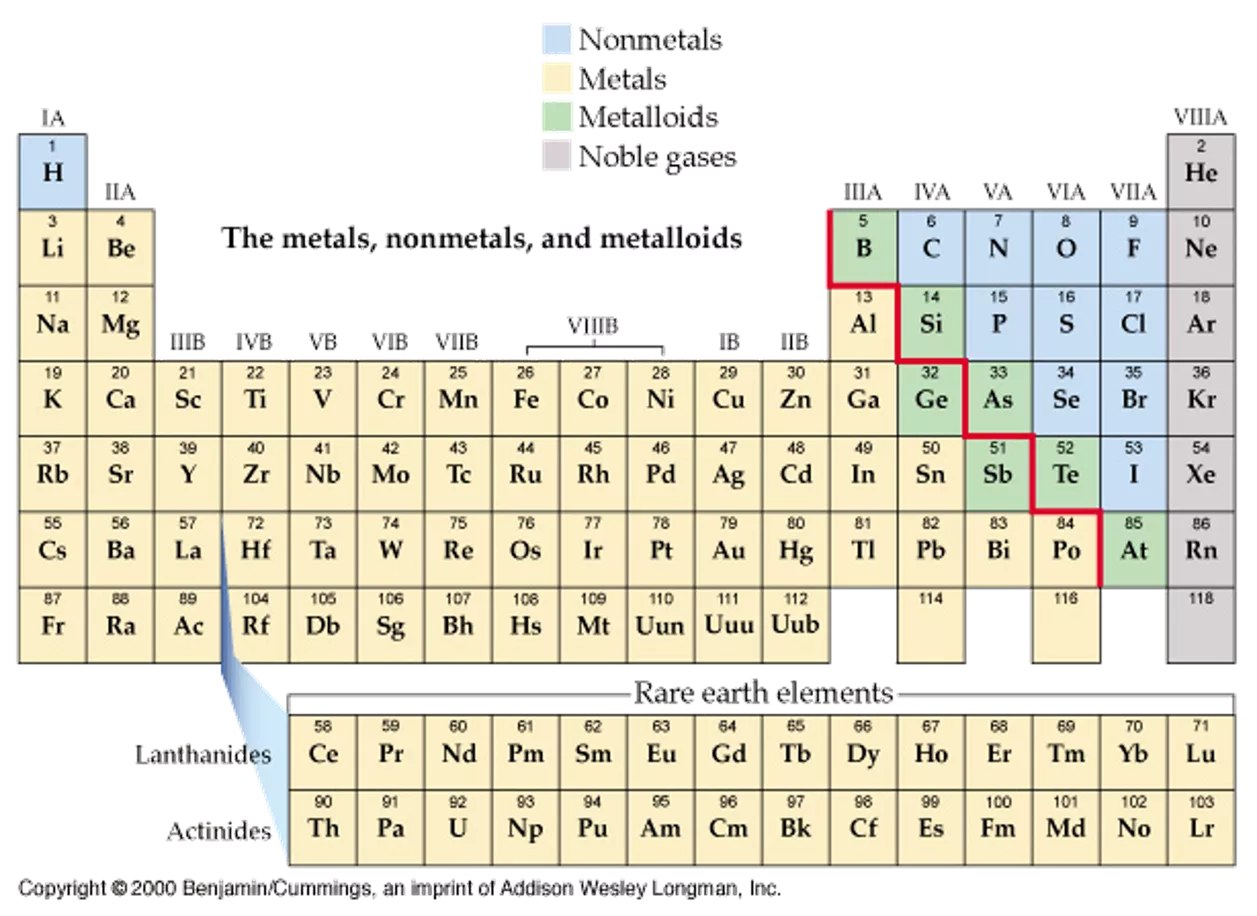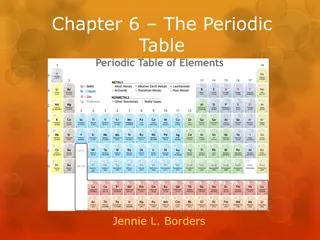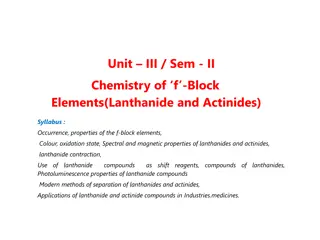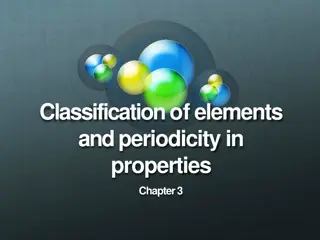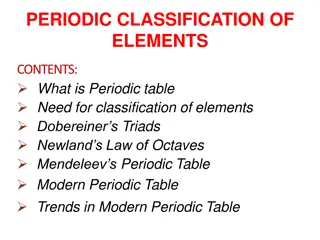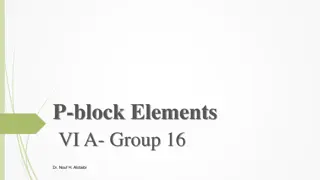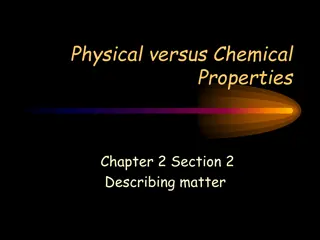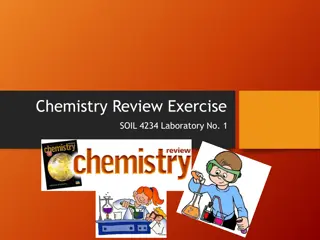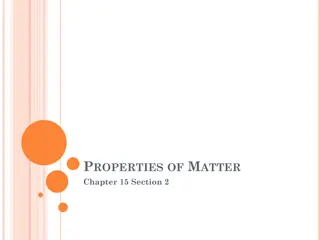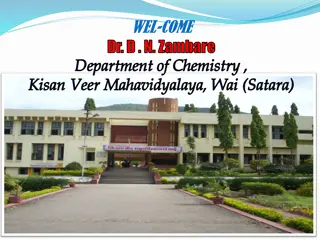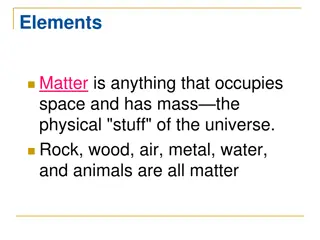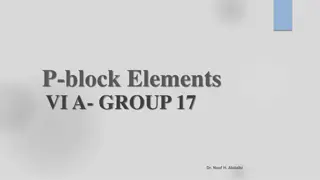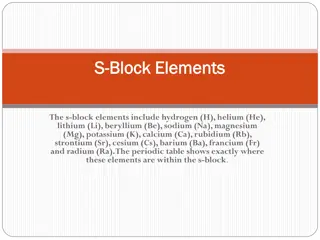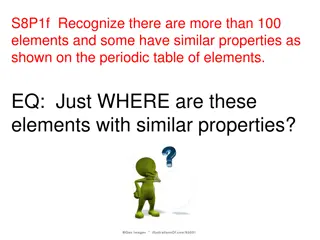Group 15 Elements and Properties Overview
This comprehensive overview covers the Group 15 elements including nitrogen, phosphorus, arsenic, antimony, and bismuth. Explore their electron configurations, properties, oxides, reactivity, and the nitrogen cycle. Learn about the different forms of phosphorus, allotropes, covalent bonding patterns, and industrial applications. Dive into the unique characteristics and behaviors of these elements in chemistry.
Download Presentation

Please find below an Image/Link to download the presentation.
The content on the website is provided AS IS for your information and personal use only. It may not be sold, licensed, or shared on other websites without obtaining consent from the author.If you encounter any issues during the download, it is possible that the publisher has removed the file from their server.
You are allowed to download the files provided on this website for personal or commercial use, subject to the condition that they are used lawfully. All files are the property of their respective owners.
The content on the website is provided AS IS for your information and personal use only. It may not be sold, licensed, or shared on other websites without obtaining consent from the author.
E N D
Presentation Transcript
phosphorus arsenic Nitrogen (l) antimony bismuth 3
The elements of Group15are: electron configuration symbol nitrogen phosphorus arsenic antimony bismuth N P As Sb Bi [He]2s22p3 [Ne]3s23p3 [Ar]3d104s24p3 [Kr]4d105s25p3 [Xe]4f145d106s26p3 4
1) Wider range of properties. 2) Metallic character character. and nonmetallic 3) The electronic configuration: N3-, P3-to +5 also exist but covalent. Sb3+, Bi3+exist. 4) Oxides of N, P andAs are acidic. Ex.: N2O3, P4O6andAs4O6 but Sb4O6amphoteric, Bi2O3is basic. 5 5
5) :NN: is unreactive. 6) Empty d orbitals for others P to Bi form six covalent bonds; PCl6-, SbCl6-, BiCl52-. 7) Allotropes for P, As, Sb, (P; red, white and black) The white P4very toxic. 7 7
Red phosphorous Black phosphorous White (P4) Red P White (P4) Black P Heating to 250 0C, not toxic, not soluble, not reactive. High pressure, Hg catalyst, (covalent and London forces) *there are As4and Sb4 9
8) The nitrogen cycle; Part of protein, nitrogen-fixation. a) N2(g) + O2(g) 2NO(g) 2NO + O2 2NO2 3NO2+ H2O 2HNO3(l ) + NO(g) nitrates nutrient b) Industrially: N2+ 3H2 2NH3 (Haber process) From plants and animals; *The death of all will produce N2to the atmosphere. 10 10
Nitrogen Cycle; https://www.classzone.com/books/ml_sci ence_share/vis_sim/em05_pg20_nitrogen /em05_pg20_nitrogen.swf 11
9) Occurrence and preparation: Table 23.3 a) NH4++ NO2- N2+ 2H2O b)As4O6+ 6C As(g) + 6CO(g) c) Oxides by roasting sulfide in air; 2Sb2S3+ 9O2 Sb4O6+ 6SO2(g) 13 13
10)Nitrides and phosphides N3-; M3N2(M = Be, Mg, Ca, Sr, ) Ca3N2+ 6H2O 3Ca2++ 6OH-+ 2NH3 (ionic nitride) Some covalent nitride; P3N5, Si3N4 Phosphides; a) Ionic phosphides; Li3P, Ca3P b) covalent phosphides; BP, AlP 14
11) Hydrogen compounds: NH3; N2+ 3H2 2NH3(commercially) NH4++ OH NH3+ H2O (in Lab.) Structure: NH3Trigonal pyramidal Amphoteric; NH3+ H2O NH4++ OH- NH3+ HCl NH4Cl NH4+is tetrahedral 15
N2H4Hydrazine; NH3-H + NH2 PH3Phosphine; P4(s)+3OH-+3H2O PH3(g)+3H2PO2- (hypophosphite ion) PH3pyramidal, no hydrogen bonding AsH3; arsino, SbH3; stibnite, BiH3, Bismuthine are (poisonous gases) 16
12) Halogen compounds: The trihalides are known; NCl3(l ) + 3H2O NH3+ 3HOCl -3 +1 PCl3(l ) + 3H2O H3PO4+ 3H++ 3Cl- -1 not +3 *The pentahalides series is complete because of lack of d orbital in nitrogen. PCl5is Trigonal bipyramidal 17
13) Oxides and oxyacid's of nitrogen: N2O dinitrogen oxide (laughing gas) NO nitrogen oxide +1 +2 N2O3 dinitrogen trioxide +3 N2O4 dinitrogen tetroxide 2NO2 N2O4 +4 +5 N2O5 18
Acids: nitric acid HNO3; NaNO3+ H2SO4 NaHSO4+ HNO3 HNO2 +3 nitrous acid P4O6(+3); Phosphorous (III) oxide P4O10(+5); Phosphorous (V) oxide (many acids) H3PO4(Phosphoric), H3PO3(Phosphorous), H2PO2(hypo phosphorous) 19
14) Industrial uses of the group: a) N; ammonia nitric acid nitrates fertilizers b) P; P2O5 phosphoric acid matches rodent poisons c)As, Sb and Bi; no much uses, alloys. 20
